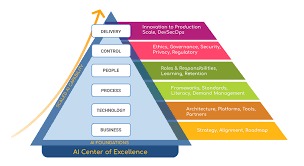Why AI is Revolutionizing Demand Planning
Traditional demand planning methods, often reliant on historical data and expert judgment, can be time-consuming and prone to inaccuracies. Artificial Intelligence (AI) offers a transformative solution by leveraging data analytics and predictive modeling to forecast future demand more accurately and efficiently. Here’s why AI is becoming a cornerstone of modern supply chain management:
- Improved Accuracy: AI algorithms can analyze vast datasets, identifying patterns and trends that human analysts may miss. This leads to more precise demand forecasts, reducing stockouts and excess inventory.
- Enhanced Efficiency: AI-powered systems automate many of the manual tasks involved in demand planning, freeing up resources for strategic decision-making.
- Real-time Insights: AI can process data in real-time, enabling businesses to respond quickly to changes in market conditions and customer behavior.
- Reduced Costs: By optimizing inventory levels and minimizing stockouts, AI can significantly reduce costs associated with overstocking, understocking, and lost sales.
Implementing AI for Demand Planning: A Step-by-Step Guide
- Data Collection and Preparation: Gather relevant data from various sources, including sales history, market trends, customer demographics, and external factors. Clean and prepare the data to ensure its quality and consistency.
- Model Selection: Choose AI based tools that are suitable for your specific needs. Common options include time series forecasting, machine learning, and deep learning models.
- Model Training: Train the selected AI model using your prepared dataset. This involves feeding the model with historical data and allowing it to learn patterns and relationships.
- Validation and Testing: Evaluate the model’s performance using validation datasets to ensure its accuracy and reliability.
- Integration: Integrate the AI-powered demand planning system into your existing supply chain processes. This may involve connecting it to your ERP, CRM, or other relevant systems.
- Continuous Monitoring and Refinement: Regularly monitor the model’s performance and make necessary adjustments to improve its accuracy over time.
Key Considerations for Successful AI Implementation
- Data Quality: Ensure that the data used for training the AI model is accurate, complete, and representative of the target market.
- Model Selection: Choose the right AI algorithm based on the nature of your data and the specific requirements of your demand planning process.
- Collaboration: Foster collaboration between data scientists, supply chain experts, and business leaders to ensure that the AI solution aligns with strategic objectives.
- Change Management: Address potential resistance to change and provide adequate training to employees who will be using the AI-powered system.
By embracing AI for demand planning, businesses can gain a competitive edge, improve customer satisfaction, and drive profitability. As AI technology continues to evolve, we can expect even more innovative solutions to emerge, further revolutionizing the way we manage supply chains.



